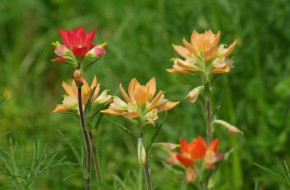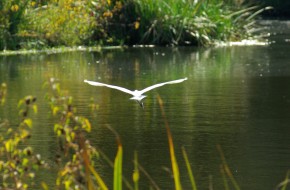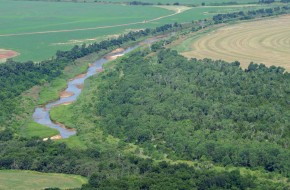Environmentally Sensitive Areas
Environmentally Sensitive Areas (ESAs) have special environmental attributes worthy of retention or special care in order to:
- Maintain habitat, open space and wildlife corridors;
- Provide stormwater management, filtration, flood and erosion control benefits; and
- Protect surface and ground water quality.
Why do Environmentally Sensitive Areas Matter?
During the “Issue Identification” phase of planokc, City staff, citizens, and stakeholders representing various environmental agencies and groups identified the following issues and trends related to impacts of development on Environmentally Sensitive Areas:
- Declining surface water quality (increasing number of impaired streams and water bodies);
- Increasing threat to groundwater quality and quantity;
- Increasing potential for flooding;
- Decreasing biological diversity and abundance;
- Increasing fragmentation of habitat and open space (including reduction and fragmentation of historic natural resources such as the Cross Timbers, and native prairies;
- Loss of critical habitat;
- Loss of ecosystem services;
- Loss of overall tree canopy;
- Increasing threat of invasive species;
- Declining air quality; and
- Lack of public awareness regarding impacts of development on environmentally sensitive areas.
What Areas are Identified as “Environmentally Sensitive”?
The following maps illustrate the types of natural features and/or habitat types that may be considered environmentally sensitive, including 1) riparian areas, 2) upland forests and 3) vulnerable aquifers.
- Riparian areas are vegetated areas adjacent to streams, lakes, ponds, and wetlands that are composed of a mixture of trees, shrubs, and grasses.
- Upland forests are forested lands primarily found in higher elevations outside of the floodplain and riparian/streamside corridors. Upland forests are dominated by species that prefer well-drained soils, or soils that do not become saturated for extended periods of time. In Oklahoma City, upland forests are made up of two forest groups: the Cross Timbers forest (historic forest) composed primarily of old-growth post oak and blackjack oak trees, and younger re-growth forests that may contain a broader mixture of tree species in addition to re-growth post oak and blackjack oak trees.
- Vulnerable aquifers are groundwater recharge zones that are vulnerable to pollution from the surface, including both point and non-point sources, as water moves downward from the surface to become groundwater. Aquifer vulnerability is directly related to the location, depth, and composition of the aquifer as well as the recharge rate of the aquifer. These areas are important for maintaining groundwater quantity and quality.
How Can Development Improve ESAs?
Development may occur in areas where different types of Environmentally Sensitive Areas exist, each potentially having different degrees of functionality and health. If Environmentally Sensitive Areas exist on a site, development should strive to meet the objectives in this plan by customizing engineering and design techniques to the functionality and health of the natural resources found on the site. The following recommendations outline some methods and best practices to protect ESAs, based on a mitigation hierarchy. The mitigation hierarchy includes the following actions, in order of priority:
- Avoidance
- Minimization
- Restoration
- Simulation
- Offset
The following examples of actions are recommended due to broad applicability in our area; however, a developer may propose alternative design or engineering techniques that achieve the same or better outcomes for a site. The Oklahoma Department of Environmental Quality, the Oklahoma Water Resources Board, and the Oklahoma Department of Agriculture may be able to provide additional information regarding riparian buffer design, stream restoration techniques and native vegetation selection.
ESA ProcessStep 1: Determine if Environmentally Sensitive Areas exist on a proposed development site. Step 2: Assess any potential impacts the proposed development may have on environmental attributes, such as: habitat, open space and wildlife corridors; filtration, flood and erosion control; and surface or groundwater quality. Step 3: Customize the design and engineering of the development to include appropriate preservation and restoration methods, techniques designed to mimic natural systems, or any combination thereof to offset impacts to the ESAs on the site. The following guidelines and best practices are recommended approaches; however, other design and engineering solutions may be proposed that achieve the same or better results. |

























